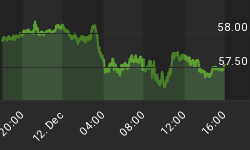As QE2 comes to a close, so does the Federal Reserve's direct involvement in the Treasury market. Without the buyer of last resort, investors, not surprisingly, have stepped away from the bond market over the past week. Auctions this past week have shown low demand amongst foreign and private buyers. Consequently, yields have risen (as bond prices have fallen). So is the 16 week thrust higher in Treasury bonds over?
Not according to my bond model, which correctly identified the recent run up starting early March. So despite the technical weakness in bond prices that my indicators are perceiving, I am willing to give this down move a bit of latitude here. In other words, the fundamental model says "stay the course" and the technical model is short term oversold.
As I have discussed recently, the run up in Treasury bonds seem to anticipate talk that global growth and more specifically, US economic growth was on the wane. That talk seems to have subsided with 4 days of gains in the equity markets. Treasury bond prices have stopped short of "predicting" an economic contraction, and all this has turned out to be is the infamous economic "soft patch" for now.
Figure 1 is a weekly chart of the i-Shares Lehman 20 plus Year Treasury Fund (symbol: TLT). This past week's price weakness has broken a short term up trend line ( in purple) and prices are back below the 40 week moving average. The price move from the lows to the 40 week moving average was consistent with "talk" on an economic soft patch. A break above the down sloping red trend line would have been consistent with an economic contraction -- that has yet to happen.
Figure 1. TLT/ weekly
For now, the technical picture is weak, but the fundamental picture (i.e., bond model) remains strong. Considering the short term oversold nature of Treasury bonds, I am willing to sit tight through this down draft.
Lastly, there is a very good article from today's Wall Street Journal talking about where we have been with QE2 and who is buying the bonds. This can be accessed at this LINK.
















